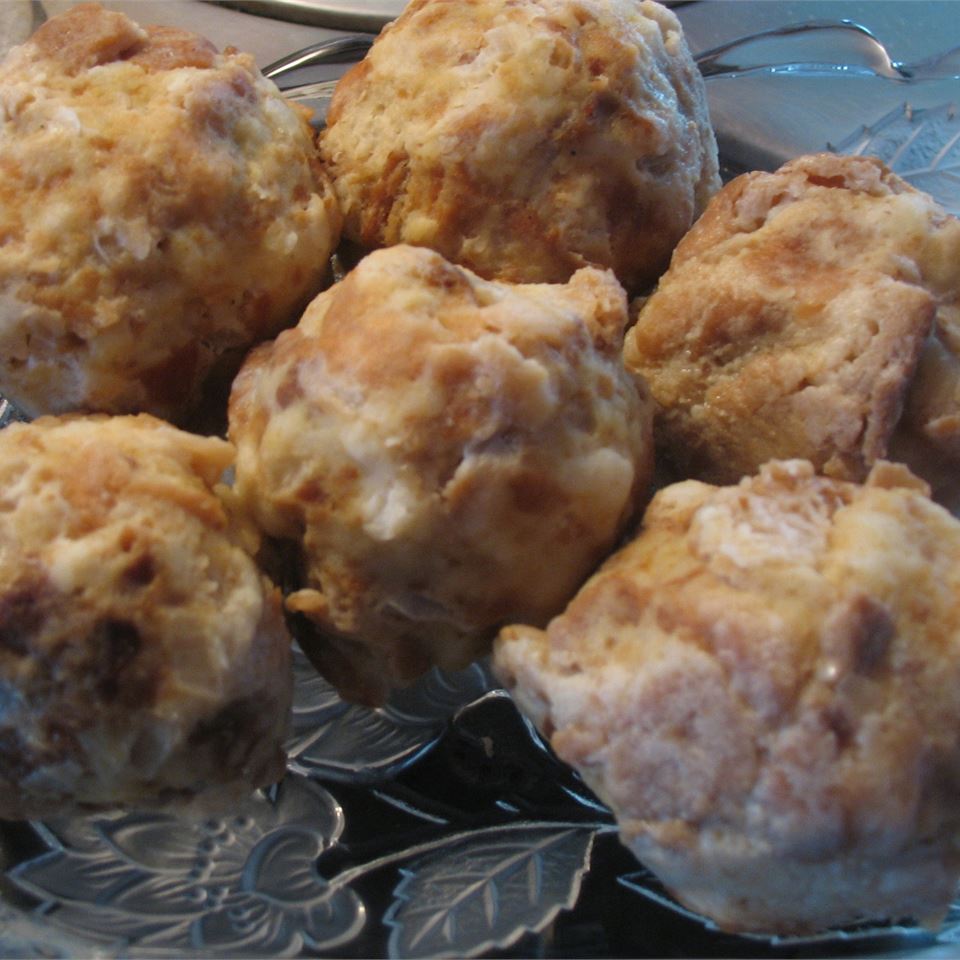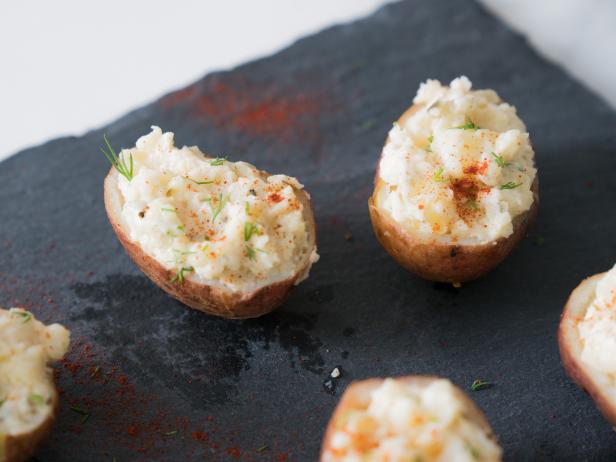**Knödel: A Culinary Journey Through Central Europe**
Knödel, also known as dumplings, are a cherished culinary delight with a rich history and diverse variations across Central Europe. These delectable morsels, often crafted from bread, potatoes, or a combination of both, hold a special place in the hearts and kitchens of many countries, including Austria, Germany, Hungary, and the Czech Republic. Each region boasts its unique interpretation of knödel, offering a tantalizing array of flavors, textures, and culinary techniques.
**Explore a World of Knödel Delights:**
* **Semmelknödel (Bread Dumplings):** A classic Austrian dish, these dumplings are prepared using stale bread rolls, milk, eggs, and a medley of herbs and spices. Their fluffy texture and comforting flavor make them a beloved accompaniment to hearty stews and roasts.
* **Kartoffelknödel (Potato Dumplings):** Hailing from Germany, these dumplings showcase the versatility of potatoes. Finely grated or mashed potatoes are combined with flour, eggs, and seasonings, resulting in pillowy-soft dumplings that pair perfectly with savory dishes like sauerkraut and roasted meats.
* **Germknödel (Yeast Dumplings):** A sweet indulgence from Austria, these dumplings are made with a yeast-based dough filled with a delectable plum jam or powidl (plum butter). Steamed until fluffy, they are typically served with a sprinkling of powdered sugar and melted butter, creating a symphony of flavors in every bite.
* **Szilvásgombóc (Plum Dumplings):** A Hungarian specialty, these dumplings feature a sweet filling of plums wrapped in a delicate potato dough. Boiled until tender, they are often topped with a generous drizzle of melted butter and a dusting of cinnamon sugar, resulting in a harmonious blend of sweet and savory notes.
* **Knedlíky (Czech Dumplings):** The Czech Republic offers a diverse range of dumplings, each with its unique characteristics. From the classic houskové knedlíky (bread dumplings) to the hearty bramborové knedlíky (potato dumplings), and the sweet ovocné knedlíky (fruit dumplings), Czech dumplings are a testament to the country's culinary creativity.
Knödel, in all their forms, embody the culinary heritage of Central Europe. Whether served as a savory accompaniment to hearty dishes or as a sweet treat, these dumplings offer a delightful culinary experience that transcends borders and cultures. So, embark on a culinary journey through Central Europe, one dumpling at a time, and discover the diverse flavors and textures that make knödel a beloved delicacy across the region.
SEMMELKNöDEL (GERMAN BREAD DUMPLINGS)

A specialty of the Bavaria region of southern Germany, drenched in gravy these SemmelKnödel are simply heaven! Serve them with beef or pork roast, any kind of sauce/gravy, goulash and more!
Provided by Kimberly Killebrew
Categories Side Dish
Time 35m
Number Of Ingredients 12
Steps:
- Chop the hardened bread into small cubes and place them in a large bowl. Pour the hot milk over the bread, cover and let sit for 20-30 minutes or until softened.
- Heat the butter in a frying pan and cook the onions just until transparent, do not brown them. Add the cooked onions to the bread mixture along with the eggs, cooked bacon (if using), parsley, salt, pepper and nutmeg. Knead the mixture together with your hands until very thoroughly combined, breaking up as many of the bread cubes as you can until it's a soft and chunky-smooth consistency. If the dough is too wet, add breadcrumbs (not flour).
- Wet your hands to prevent the dough from sticking and form Knödel about the size of a tennis ball (they will expand slightly when cooked). Press the Knoedel between your palms to make sure they're nice and compact. Bring a large, wide pot of lightly salted water to a very light simmer - not boiling but just on the verge of boiling with tiny fizzy bubbles floating up. Carefully drop the Semmel Knoedel in the water and let them "steep" 15-20 minutes. Do not at any point let the water boil or you risk your Knödel losing shape or falling apart. Carefully lift them out with a slotted spoon. Serve with Rouladen, Sauerbraten, Senfbraten, Geschnetzeltes, Jaegerschnitzel, etc.
- To Freeze The Knödel: Let them cool completely, place them spread apart on a cookie sheet and freeze them, then transfer them to a freezer bag or container. To reheat, let them thaw and reheat them covered (to create some steam) in the microwave.
- Makes 6-7 Semmelknödel, depending on the size.
Nutrition Facts : ServingSize 1 Knödel, Calories 211 kcal, Carbohydrate 29 g, Protein 8 g, Fat 6 g, SaturatedFat 2 g, Cholesterol 63 mg, Sodium 714 mg, Fiber 2 g, Sugar 6 g
KNODEL
This is an Austrian classic. 'Knodel' (you pronounce the "k") means 'dumpling' in German. My mother used to make this a lot when I was small because it's a good way to use up stale bread. It remains one of my fondest childhood taste memories. The quantities are approximate, because this is one of those recipes that isn't written down, so I had to follow her around the kitchen the last time she made it. Be sure the bread is stale. If it isn't, dry it in the oven after cutting it into cubes.
Provided by Margaret
Categories Main Dish Recipes Dumpling Recipes
Yield 5
Number Of Ingredients 7
Steps:
- Butter one 9x11 inch baking dish.
- In a skillet over medium heat, combine the onion, parsley and butter. Cook until onions begin to brown. Pour over bread cubes and toss well.
- Whisk together the eggs, milk, salt and pepper. Pour over the bread and onion mixture; mix well and allow to stand for 1 hour.
- Firmly press mixture into baking dish; tightly cover with aluminum foil.
- Place baking dish on a rack in a larger pot with 3 inches of water. Cover pot and steam for 1 hour. Remove from pot and allow to cool for 10 minutes. Drizzle with melted butter before serving.
Nutrition Facts : Calories 197.4 calories, Carbohydrate 27.6 g, Cholesterol 82.6 mg, Fat 6.1 g, Fiber 1.5 g, Protein 7.9 g, SaturatedFat 2.6 g, Sodium 370.4 mg, Sugar 5.3 g
SEMMELKNOEDEL (BREAD DUMPLINGS)

My Bavarian Oma made these large dumplings to accompany roast pork or game dishes, any meat with gravy, or with mushrooms in a creamy sauce. Serve one dumpling alongside your dish, and cover with a little gravy.
Provided by Peachy
Categories Main Dish Recipes Dumpling Recipes
Time 50m
Yield 4
Number Of Ingredients 9
Steps:
- Place the bread cubes into a large bowl. Heat the milk until it starts to bubble at the edges, then pour it over the bread cubes. Stir briefly to coat the bread. Let soak for 15 minutes.
- Meanwhile, melt the butter in a skillet over medium heat. Add the onions; cook and stir until tender. Stir in the parsley, and remove from the heat. Mix into the bowl with the bread along with the eggs, salt and pepper. Use your hands, squeezing the dough through your fingers until it is smooth and sticky.
- Bring a large pot of lightly salted water to a boil. The water should be at least 3 or 4 inches deep. When the water is boiling, make a test dumpling about the size of a small orange or tangerine, by patting and cupping between wet hands. Gently drop into the boiling water. If it falls apart, the dough is too wet. In this case, stir some bread crumbs into the rest of the dumpling batter.
- Form the remaining dough into large dumplings, and carefully drop into the boiling water. Simmer for 20 minutes, then remove to a serving plate with a large slotted spoon. They should come out soft, spongy and delicious!
Nutrition Facts : Calories 506.1 calories, Carbohydrate 78.8 g, Cholesterol 113.1 mg, Fat 12.3 g, Fiber 3.9 g, Protein 20.5 g, SaturatedFat 5.9 g, Sodium 1220.1 mg, Sugar 7.9 g
KNöDEL RECIPE

Knödel is a german word for dumpling. This dish is a traditional Austrian dish is easily made with white bread, eggs, and milk.
Provided by Miguel
Categories Pan-Fry & Skillet
Time 1h1m
Yield 5
Number Of Ingredients 8
Steps:
- Butter one 9x11-inch baking dish.
- In a skillet over medium heat, combine the onion, parsley and butter. Cook until onions begin to brown. Pour over bread cubes and toss well.
- Whisk together the eggs, milk, salt and pepper. Pour over the bread and onion mixture; mix well and allow to stand for 1 hour.
- Firmly press mixture into baking dish; tightly cover with aluminum foil.
- Place baking dish on a rack in a larger pot with 3 inches of water. Cover pot and steam for 1 hour. Remove from pot and allow to cool for 10 minutes. Drizzle with melted butter before serving.
Nutrition Facts : Calories 319.00kcal, Carbohydrate 49.00g, Cholesterol 70.00mg, Fat 8.00g, Fiber 3.00g, Protein 12.00g, SaturatedFat 2.00g, ServingSize 5.00 people, Sodium 512.00mg, Sugar 8.00g, TransFat 1.00g, UnsaturatedFat 2.00g
KNOEDEL (AUSTRIAN BREAD DUMPLING)

This recipe calls for the Knoedel to be baked in a dish, like a bread pudding. However, the traditional way to cook the dumplings is to form them into a ball, chill for 30 minutes to overnight, then boil in water until cooked. You may modify this recipe to boil the dumpling balls if you wish. Serve with stew or gravy.
Provided by Scarlett516
Categories Healthy
Time 2h20m
Yield 4-6 serving(s)
Number Of Ingredients 9
Steps:
- If you do not have stale bread, leave the bread out to dry overnight, or dry in the oven on low. The bread should be in cubes and put into a bowl.
- Butter a 9"x13" baking dish.
- In a skillet, brown the onion, parsley, and butter over medium heat. Pour over the bread crumbs.
- In a separate bowl, whisk together the eggs, milk, salt, and pepper.
- Pour over the bread crumbs and mix well before leaving to stand for 1 hour.
- Fill a large pot with 3" of water. Place a rack in the pot, then put the baking dish on the rack. Cover and steam for 1 hour.
- Remove from rack and allow to cool for 10 minutes. Drizzle with melted butter before serving.
Nutrition Facts : Calories 407.4, Fat 10.4, SaturatedFat 4.2, Cholesterol 119.3, Sodium 854.9, Carbohydrate 63.5, Fiber 3.2, Sugar 6.3, Protein 14.2
Tips:
- Use fresh, high-quality ingredients. This will make a big difference in the flavor of your Knödel.
- Make sure your bread is stale. This will help the Knödel hold their shape and not become too soggy.
- Don't overmix the dough. Overmixing will make the Knödel tough.
- Be careful not to overcrowd the pot when cooking the Knödel. This will prevent them from cooking evenly.
- Serve the Knödel immediately after cooking. This is when they are at their best.
Conclusion:
Knödel are a delicious and versatile dish that can be enjoyed for breakfast, lunch, or dinner. They are also a great way to use up stale bread. With a little practice, you can make perfect Knödel that your family and friends will love.
Are you curently on diet or you just want to control your food's nutritions, ingredients? We will help you find recipes by cooking method, nutrition, ingredients...
Check it out »
You'll also love










